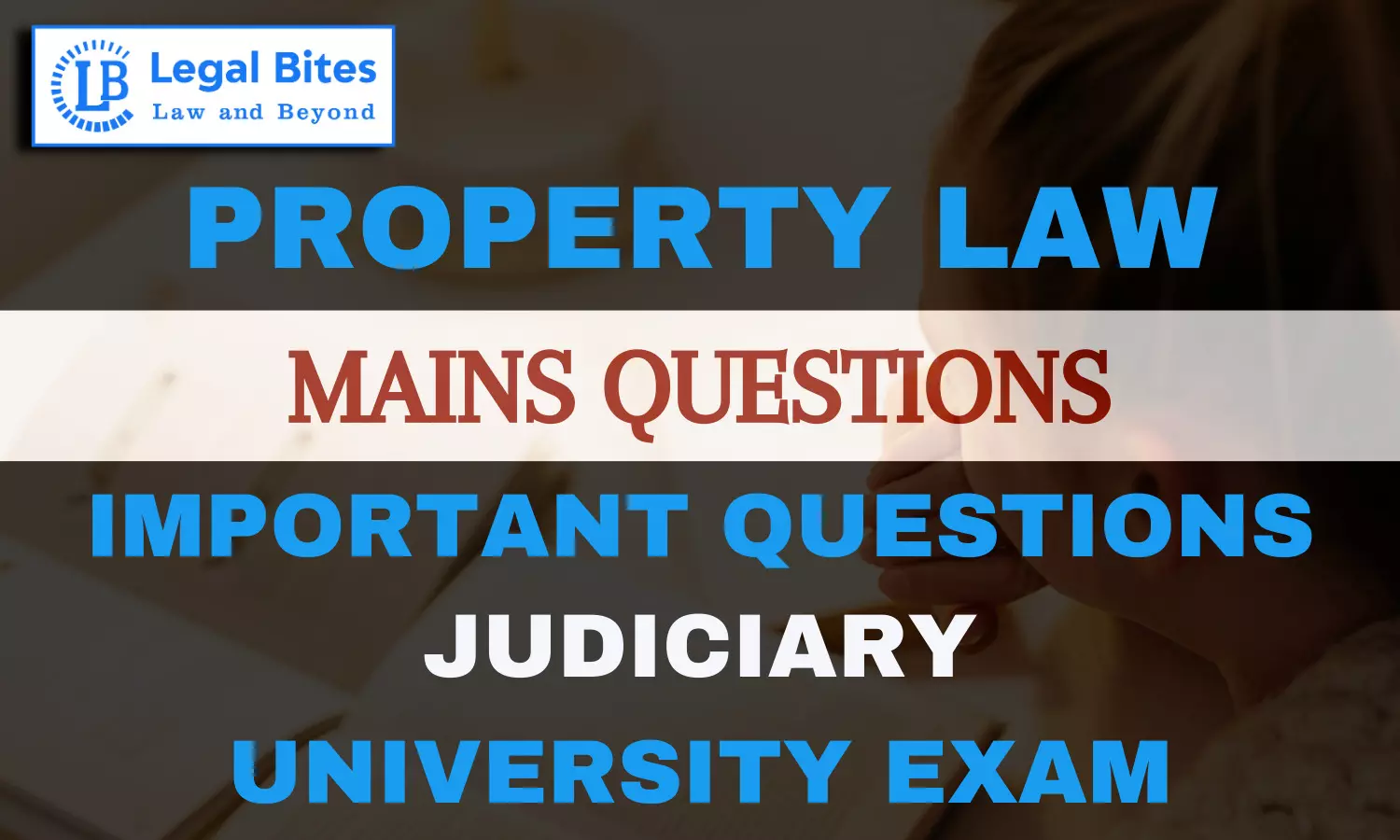S mortgages two properties K and Kh to A. Subsequently S again mortgage the property K to D....... Discuss the rights of A to realise his money from properties K and KH.
Find the answer to the mains question of Property Law only on Legal Bites.

Question: S mortgages two properties K and Kh to A. Subsequently S again mortgage the property K to D. In enforcement of his mortgages D brings the property K to sale and purchase it himself. Discuss the rights of A to realise his money from properties K and KH. [UPJS 1987]Find the answer to the mains question of Property Law only on Legal Bites. [S mortgages two properties K and Kh to A. Subsequently S again mortgage the property K to D. In enforcement of his mortgages D brings the property...
Question: S mortgages two properties K and Kh to A. Subsequently S again mortgage the property K to D. In enforcement of his mortgages D brings the property K to sale and purchase it himself. Discuss the rights of A to realise his money from properties K and KH. [UPJS 1987]
Find the answer to the mains question of Property Law only on Legal Bites. [S mortgages two properties K and Kh to A. Subsequently S again mortgage the property K to D. In enforcement of his mortgages D brings the property K to sale and purchase it himself. Discuss the rights of A to realise his money from properties K and KH.]
Answer
Section 48 of the Transfer of Property Act, 1882 lays down the concept of the doctrine of priority. The provision runs down as below:
“Priority of rights created by transfer—Where a person purports to create by transfer at different times rights in or over the same immoveable property, and such rights cannot all exist or be exercised to their full extent together, each later created right shall, in the absence of a special contract or reservation binding the earlier transferees, be subject to the rights previously created.”
This Section lays down a crucial principle that no man can convey a better title apart from what he has.
Section 48 is based on the maxim, qui prior est tempore potior est jure, which means that one who is first in time is better in law. The transferor cannot prejudice the right of the transferee by any subsequent dealing with the property.
This doctrine is drawn from the Principles of Natural Justice which states that if the rights are made in favour of two different people at different times, then the one who has the advantage in time will get the advantage in law as well. However, this principle applies only within the cases where the conflicting equities of the parties involved are otherwise equal.
When a transferor transfers the same property in favour of more than one transferee, then each transferee will enjoy the property together with its right as the former transferee.
A full- bench of the Allahabad High Court in Raghunath Prasad v. Jurawan Rai, [ I.L.R. 8 All. 105] said:
“a second mortgagee has a right to sell the property hypothecated to him subject to the rights existing in favour of the first mortgagee”.
The Madras High Court in Gangadhara v. Sivarama, I.L.R. 8 Mad. 246 said :
“the plaintiff, second mortgagee, was entitled to sell the property subject to the lien of the prior mortgagees.”
Thus, the provisions pertaining to the doctrine of priority and the Supreme Court’s judgment make it clear that the interests of the first mortgagee would prevail over the second.
In the present case at hand, S mortgages two properties K and Kh to A and subsequently mortgage property K to D which is subject to a prior mortgage. In enforcement of his mortgages, D brings the property K to sale and purchases it himself. A being the prior mortgagee has the right to realise his money from properties KH first and then K.

Mayank Shekhar
Mayank is an alumnus of the prestigious Faculty of Law, Delhi University. Under his leadership, Legal Bites has been researching and developing resources through blogging, educational resources, competitions, and seminars.
